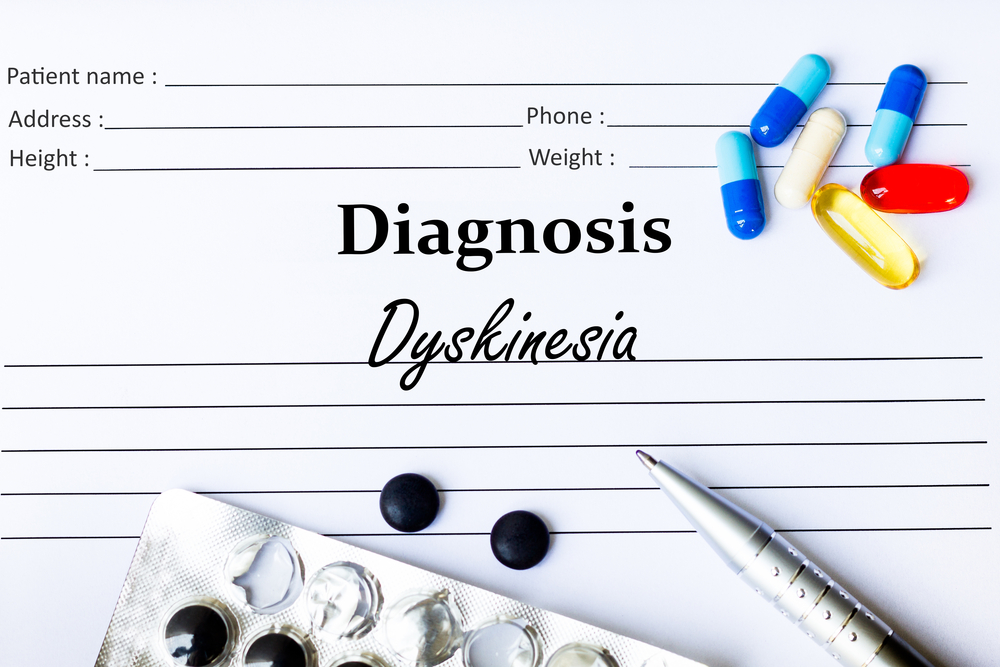
Treating Dyskinesia in Parkinson’s Disease Patients
Dyskinesia is a condition that prompts involuntary muscle movement, or spasms, in patients with Parkinson’s Disease. These muscle twitches can affect either the entire body or just one specific area of the body (i.e., arm, leg, or head).
Parkinson’s disease refers to a brain disorder resulting in a gradual loss of muscle control. As its symptoms are usually mild at first, the condition can be easily overlooked. For example, early signs of Parkinson’s include very slight tremors in the legs, arms, hands, or lips, difficulty in getting up from a seated position, trouble walking, impaired balance, a stooped posture, crowded handwriting, and bradykinesia, frozen (or mask like) expression, or slowed or impaired movement.
However, dyskinesia tremors often occur in the very early stages of Parkinson’s disease, in roughly 70% of patients. While dyskinesia may indicate Parkinson’s, it may also indicate other underlying health conditions as well.
Causes of dyskinesia in Parkinson’s disease patients
Dyskinesia is part of the progression of Parkinson’s disease progression, it’s’ usually a side effect due to taking levodopa medications to treat the disease. The jerky movements characterized as dyskinesia usually occur when Parkinson’s in under control. It usually causes uncontrolled wriggling, twitching, swaying, or bobbing of the head.
As Parkinson’s disease progresses, dopamine brain cells deteriorate and increase movement difficulties. Drugs like levodopa aim to reduce the progression of the disease, however, long term drug use can damage the dopamine receptors, eventually causing dyskinesia.
Managing dyskinesia with Parkinson’s disease
To avoid the onset of dyskinesia, patients should delay taking levodopa for as long as possible. For example, rather than levodopa, doctors may prescribe a dopamine agonist instead as the first line of treatment as medical research indicates that early agonist therapy delays the need for levodopa by many years. Other options for preventing dyskinesia include:
- Splitting medications
Due to the “wearing off” phenomenon, the timing of medication also requires consideration for managing dyskinesia in Parkinson’s patients. To do this, you can ask your doctor to split your daily medication into smaller yet frequent doses.
- Manage stress
As dyskinesia has a tendency to worsen while you are stressed, you must try to keep your stress levels under control. Learn to manage stress effectively, do yoga, practice deep breathing techniques, entertain yourself, and be happy.
- Stay active
Exercise not only helps reduce Parkinson’s symptoms, but also plays an integral role in slowing down disease progression.
- Treat dyskinesia
Common treatment options for dyskinesia in parkinson’s disease patients, include:
- Amantadine: this drug treats dyskinesia Parkinson’s patients and comes in 2 forms (Gocovri and Osmolex ER) to ease symptoms like stiffness, shaking, however, amantadine can cause side effects (i.e., nausea and dizziness).
- Alter levodopa dosage: Parkinson’s symptoms surface when the body lacks adequate dopamine, a brain chemical that enables the limbs to work smoothly. Levodopa does increase dopamine level in the brain, which may result in dyskinesia. Therefore, a change in the medication dose can keep dopamine at low enough levels to avoid dyskinesia.
- Deep brain stimulation: DBS is a treatment for Parkinson’s symptoms like stiffness, tremors, and walking problems, which also prevents dyskinesia.


